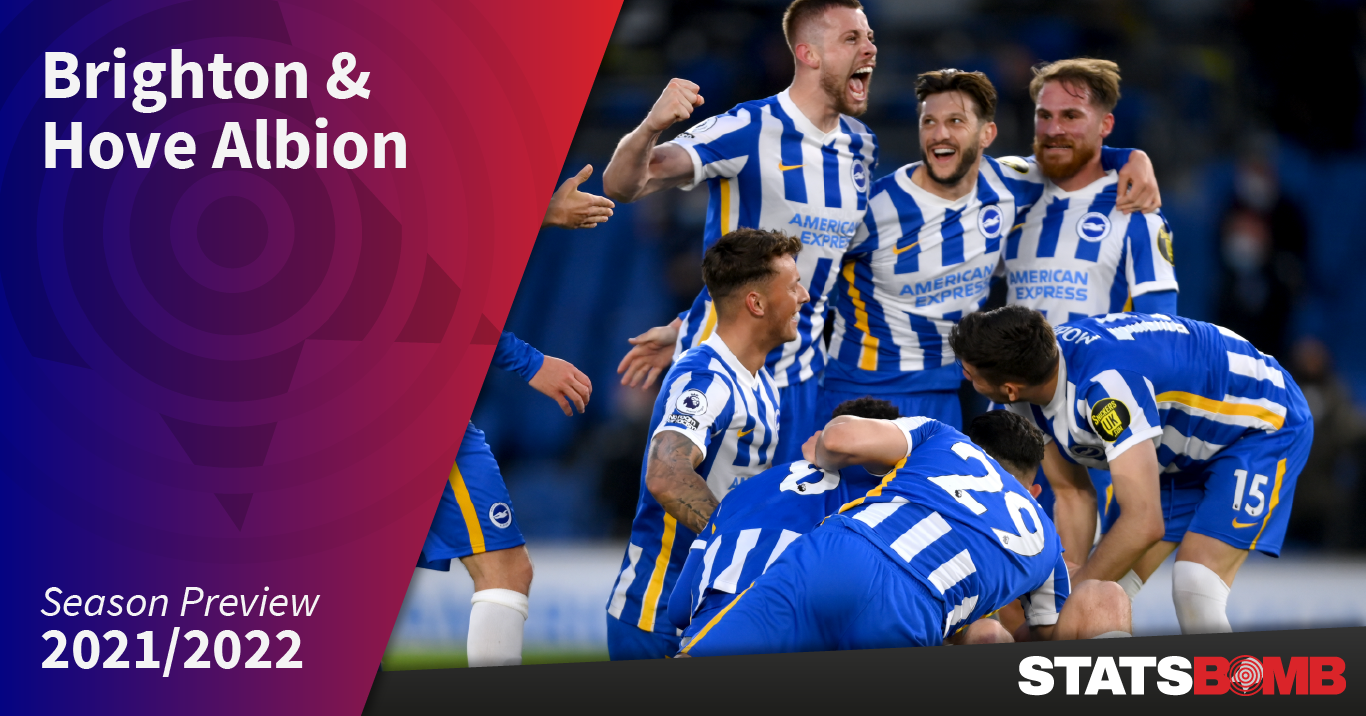For numerous reasons, Brighton will be one of the most interesting teams to watch next season. They enter year three of Graham Potter’s reign, playing football that has garnered praise from highly-decorated managers, and have several analytical storylines that need concluding.
Potter was brought in in 2019 to stabilise and then improve Brighton’s Premier League standing. They achieved the first objective with consecutive relegation-survivals of relative comfort. It’s the latter objective that the Albion hierarchy will now be looking to move towards and, despite back-to-back 41-point seasons, 2020/21 saw indications that Potter’s influence was beginning to turn Brighton into a team that can climb the table.
The topline, and I’ll bet this won’t be news to many of you, is that there was a dramatic improvement in Brighton’s underlying numbers last season. They added five goals of xG to their attacking output -- creating 44.8 non-penalty xG up from 39.7 in 2019/20 – but tightened up remarkably at the back, shaving 20 goals off their expected defensive output (32.5 xG Conceded in 2020/21 compared to 52.9 in 2019/20). The outcome was that Brighton had the fifth-best expected goal difference last season, making the most considerable improvement of all teams to compete in both campaigns.
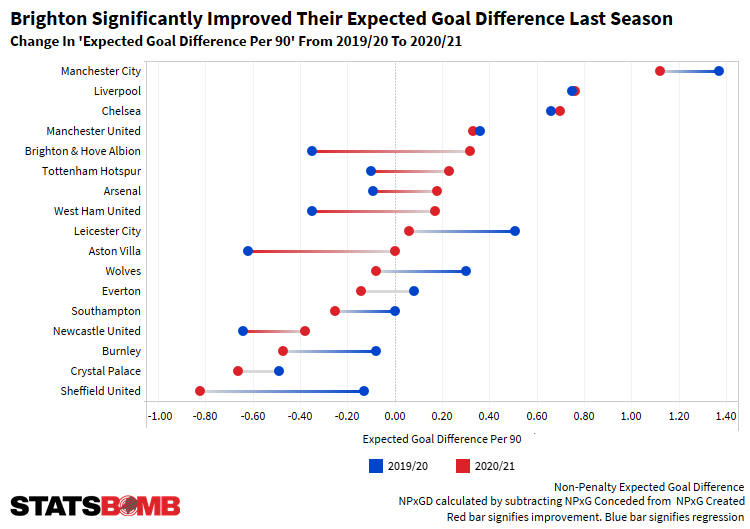
The question is, how does a team improve their process so dramatically and yet fail to improve their points tally?
Both the attack and the defence have to take some responsibility here. They undershot their xG to the tune of ~11 goals in attack, whilst the defence conceded ~seven more than expected based on the chances they conceded. The result was a ~17 goal underperformance between their expected goals and actual goals, the largest discrepancy in the league.
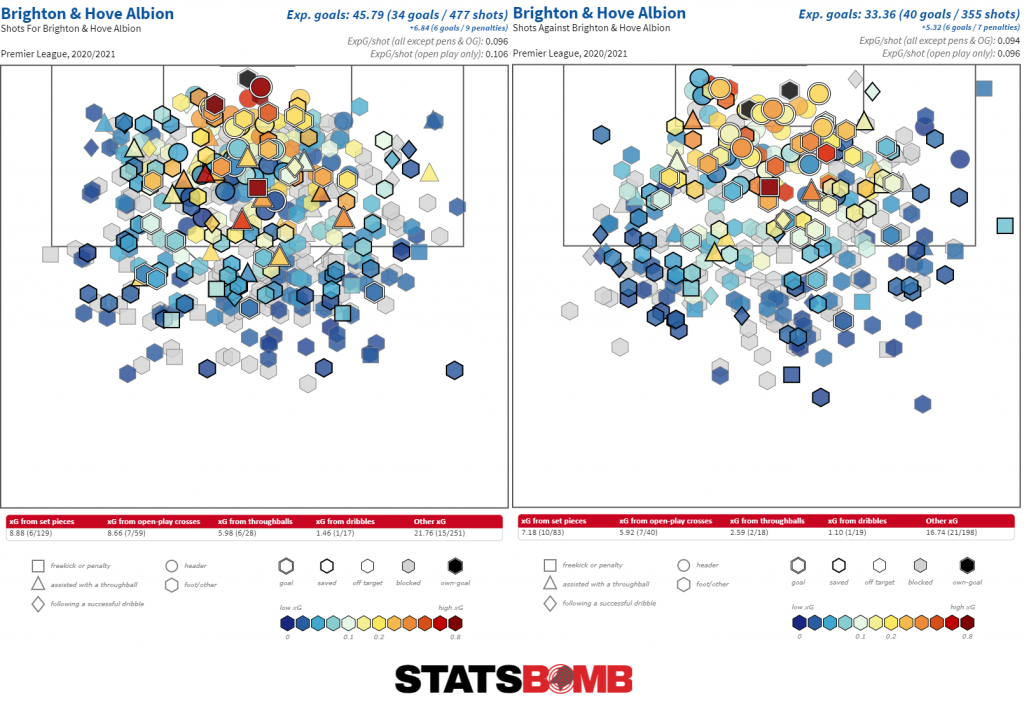
There were numerous culprits up front. Neal Maupay faced most of the scrutiny for turning 9.9xG into five goals, but there were multiple contributors to the problem across the team: Alireza Jahanbakhsh and Pascal Groß combined for 47 shots, 4.1xG, and zero goals, for example. Collectively, Brighton turned 44.8xG into 37.6 post-shot xG, with post-shot xG only accounting for shots on target and factoring in the shot placement. There was plenty of banjo-swinging, but bovine derrières went largely unscathed at the Amex.
At the back, nearly all of their underperformance occurred in the first 12 games. Mat Ryan’s performances left a lot to be desired, and he was dropped for Premier League rookie Robert Sánchez, who proved to be an immediate upgrade on Ryan and finished the season with the best Shot Stopping % in the league: a measure of how many goals a goalkeeper saved/conceded based on the post-shot xG faced.
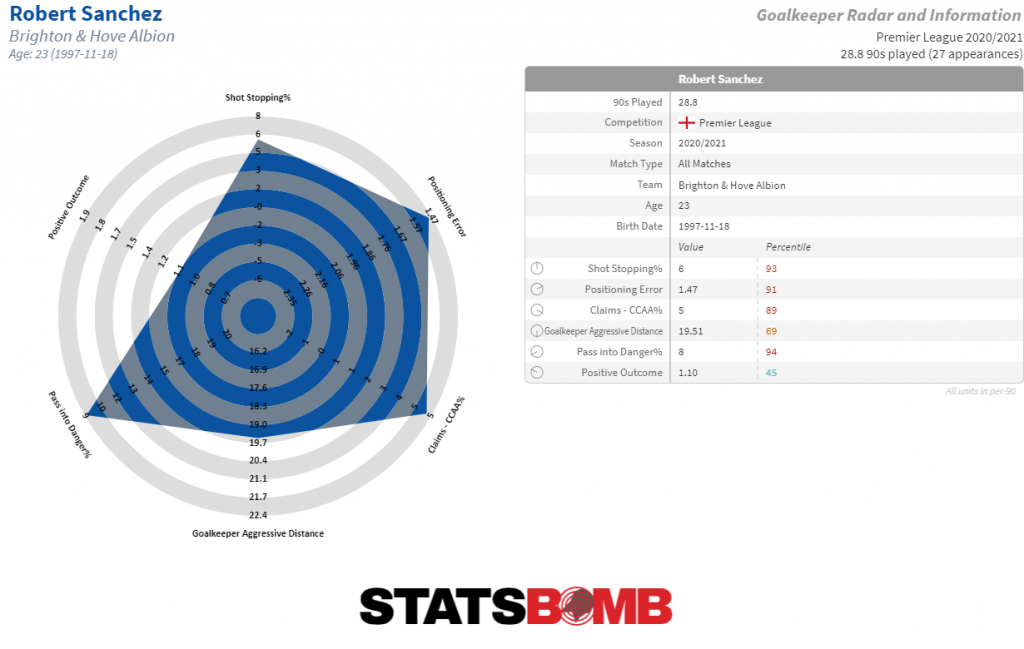
Sánchez’s introduction coincided with Brighton’s best spell of form in the season in early January, form that was the strongest indicator yet as to the potential level of Potter’s team. A run of 2-8-8 in their first 18 games returned 14 points, but Brighton then took 10 points from four games against Leeds, Fulham, Spurs and Liverpool, all without conceding a goal. The match immediately before that four-game run was a 1-0 defeat to Manchester City. Pep Guardiola said this in the aftermath:
“We were in front of the best English manager right now. You have to be a top side to play that way. They have good players, good build-up. Every pass makes sense. Their movement between the lines up front makes sense. Every player is in his position to get the ball and be free.”
What is it about the style of play Potter has implemented that prompted Guardiola to refer to them as a “top side”?
For starters, their approach in possession. Brighton generally play shorter passes in build-up, with fluid movement between players. Their Pace To Goal -- the average speed of build-up (in m/s) of possessions that end in shots – was the slowest (read: most patient) in the league last season, and the types of passes they play within those moves are those you’d more closely associate with a team competing towards the top of the table than one battling it out at the bottom:
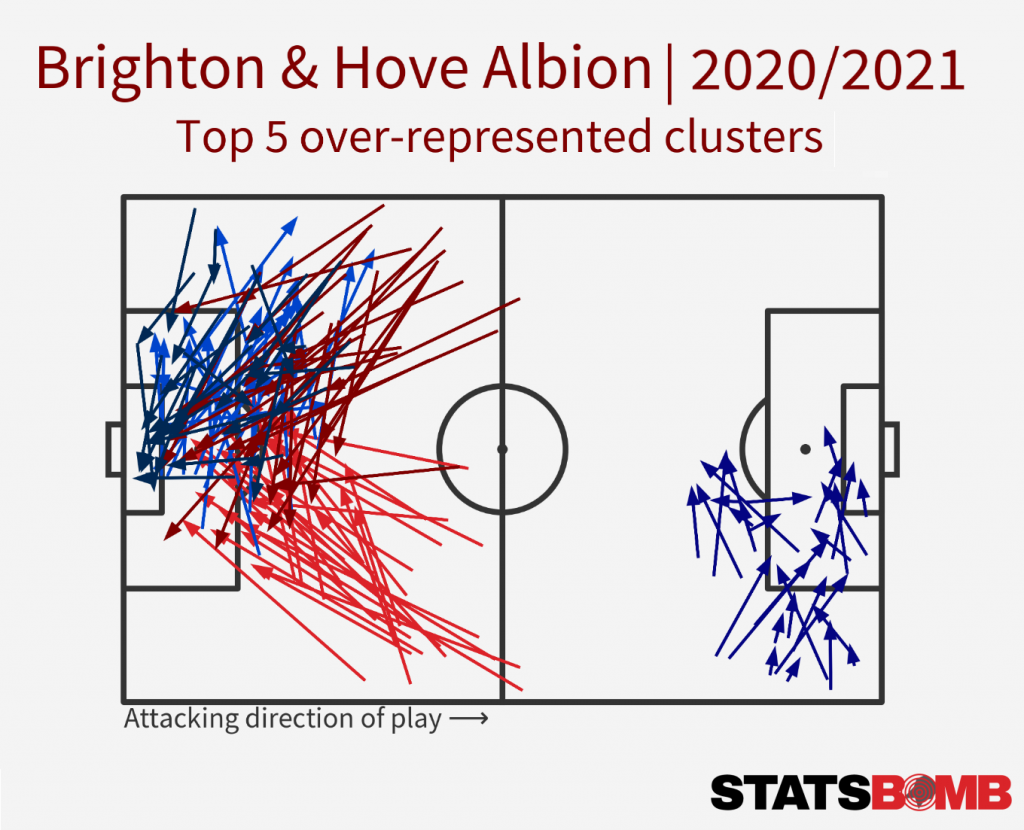
Their most common pass types were those moving the ball around the defence in the early stages of build-up and those played from the “cutback zone” – the area of the pitch where high-quality chances are regularly created. Cluster #2 and #8 are the pass types we want to zoom in on to get a picture of how Brighton look to attack: short passes from central areas to create opportunities to cut the ball back from inside the box.
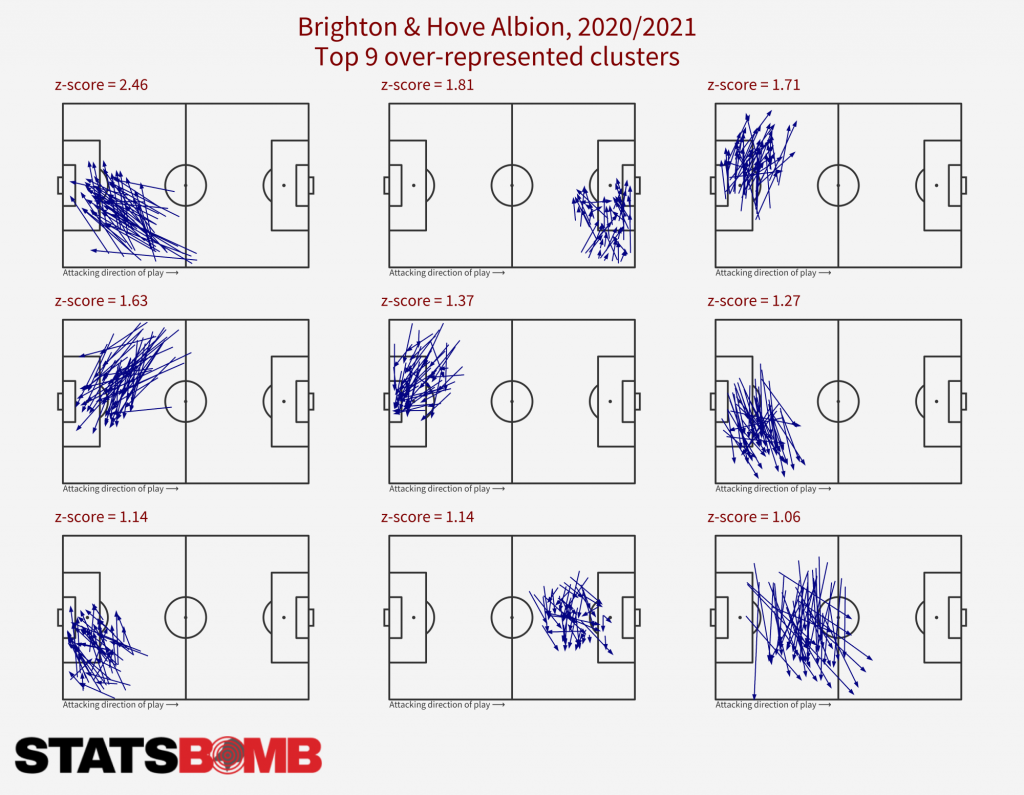 A short-passing possession game that’s effective at getting into areas for cutbacks? It’s no wonder Pep was enamoured.
A short-passing possession game that’s effective at getting into areas for cutbacks? It’s no wonder Pep was enamoured.
Only six teams reached the final third more often than Brighton last season. Only three completed more passes inside the penalty box. Only Leeds completed more cutbacks. Brighton controlled the territory effectively, but their slow build-up did come at the cost of some shot clarity: their opponents had an average of 3.6 defenders behind the location of the ball when Brighton shot from inside the box. That number was the highest in the league, as was the 39% rate of those shots being blocked.
While this may be problematic in attack, it’s a trait they use themselves in defence. On average, Brighton had the second-most defenders behind the location of the ball when their opponents took a footed shot from inside the box. That defensive organisation goes a long way to explaining why their defensive numbers were so good; they were able to limit the number of times their opponents could penetrate their area and reduce the quality of the chances their opponents took when they did pull the trigger. The shots Brighton conceded last season were taken from the third-furthest distance away from goal on average.
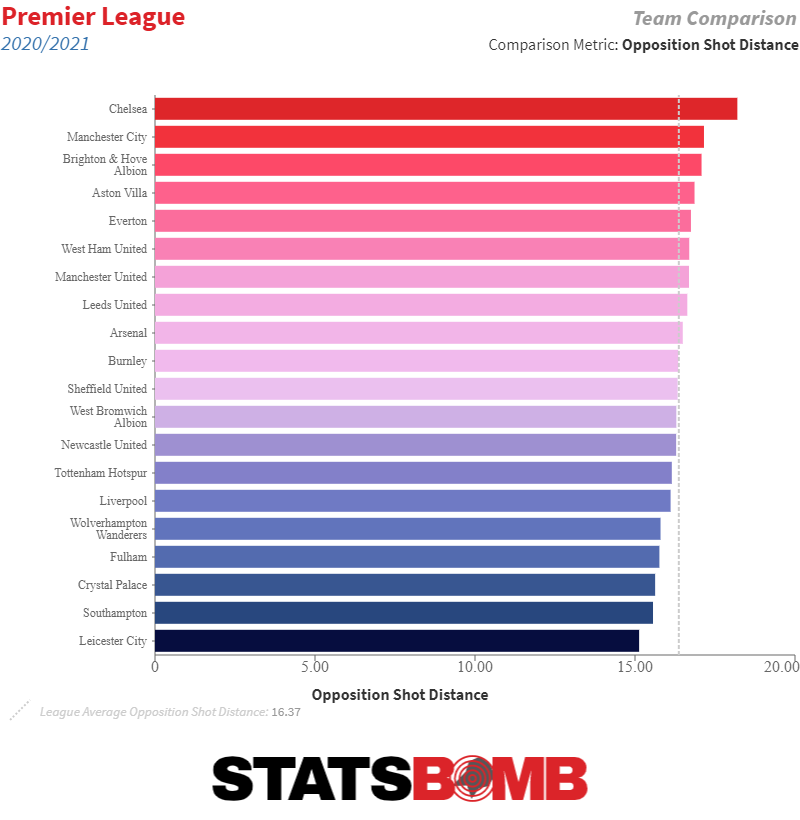
Current Squad
The big story is around the £50m departure of Ben White to Arsenal. A player that worked his way up through the Brighton youth system before spending time graduating through all three of the EFL divisions, White made his Premier League and England international breakthrough last season. The sale is undoubtedly a short-term blow to Brighton’s defensive ranks, but talk of a replacement is already underway. Defensive solidity will be the main attribute being searched for, helped by the fact that Brighton already possess one of the best in-possession defenders in the Premier League. Adam Webster made 7.7 carries and passes that moved the ball 25% closer to goal last season, more than any other centre back in the league.
Since promotion to the top tier, the Seagulls have developed a niche in the transfer market: no region is out of their reach. They’ve signed domestic up-and-comers (Adam Webster and Neal Maupay), domestic experience (Danny Welbeck and Adam Lallana), but have also been unafraid to sign from smaller European leagues (Leandro Trossard and Jakub Moder) or even continents further afield too (Alexis Mac Allister and Moisés Caicedo).
As a result, their squad is full of players that have the potential to be good Premier League players, signed for relatively modest fees. A good example of the strategy is mobile midfield maestro Yves Bissouma -- the other name being linked with a transfer to the league's upper echelons. His potential replacement could already be in the building, with Enock Mwepu the only bit of business Brighton have concluded so far besides Kjell Scherpen. Scherpen will be a 6’8” goalkeeping understudy to Sánchez, but it’s Mwepu who should make the stronger impact on the first XI after signing from Salzburg.
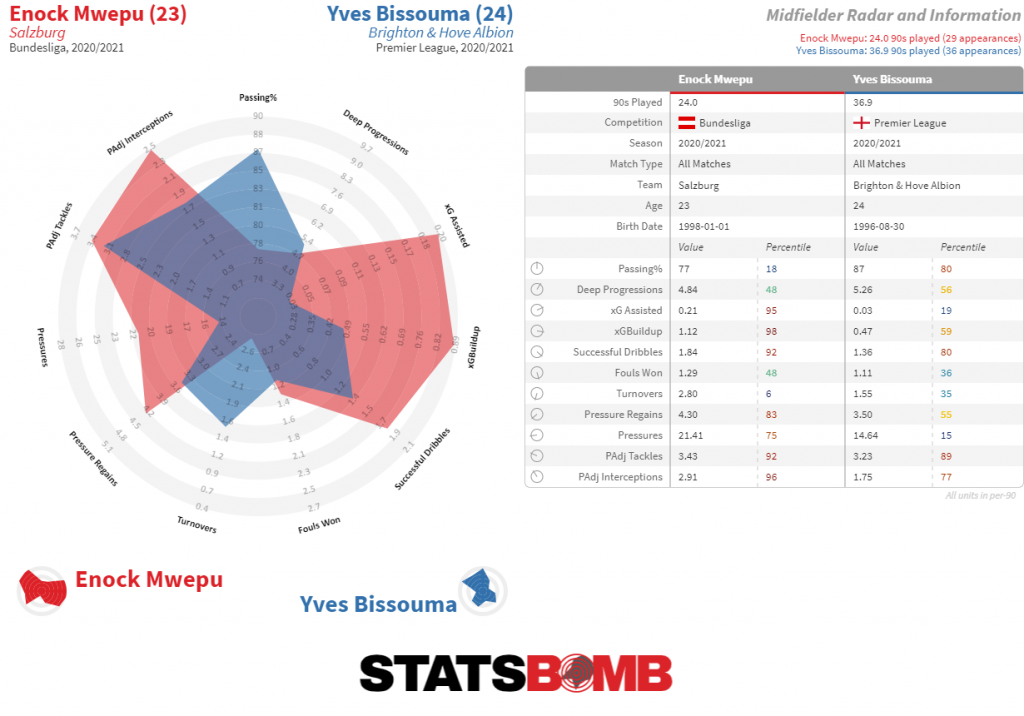
Transfers are glamorous, but Potter will be looking to players already within his current squad to step up and play a bigger role next season. Alexis Mac Allister, Jakub Moder and Steven Alzate all played 600-1200 minutes last season and could be set to make a more significant contribution this time around. Moder posted some impressive numbers while in Poland, so it’ll be interesting to see if he can adapt to the level of the Premier League, whilst Mac Allister showed signs of a player that could be a more regular starter in the 1000+ minutes he played last season.
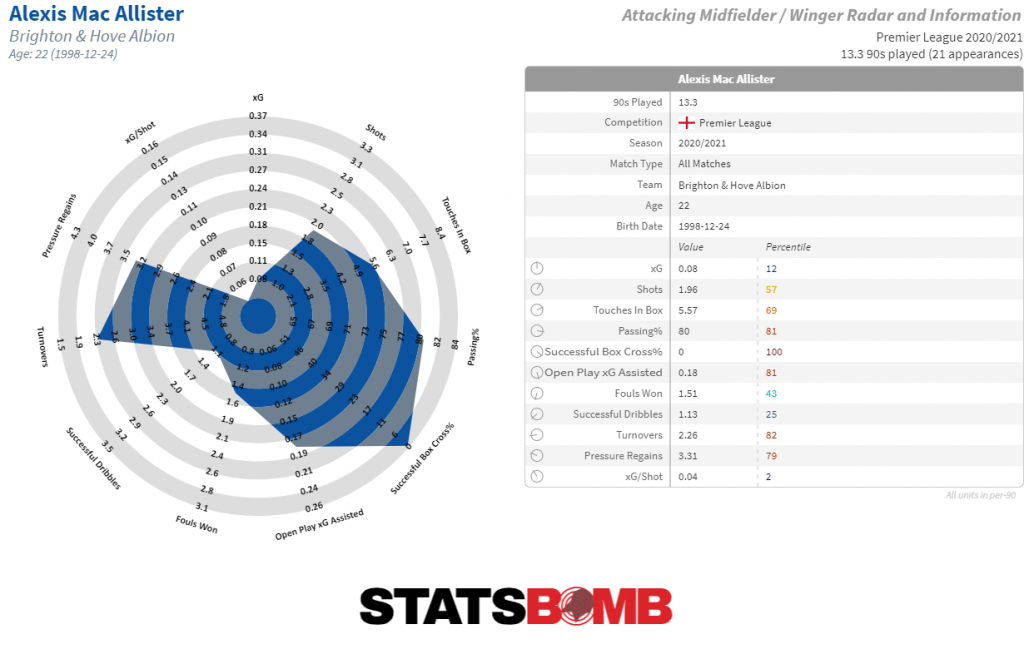
Projection
It’ll be captivating to watch the development of this Brighton side under Graham Potter, but it’s far from a slight to say that we shouldn’t expect their metrics to be quite so strong this time around. Other teams should improve to overcome Brighton's position of fifth in the expected goal difference table and the loss of key players could hamper them slightly -- they’ll need to find a new talisman in defence after White’s departure, and the rumours of interest in Bissouma refuse to go away either.
All that said, their approach of signing players that are one-to-two years away from Premier League excellence (see the 2018 signing of Bissouma, Yves) could pay dividends again with plenty waiting in the wings to take their chance, under a coach in Potter that has proven he can bring these players into the team and improve them further. The positive metrics, the style of play, the development of players with potential; all these factors mean we should be feeling positive about Brighton ahead of the 2021/22 season. Steady progress and adding several points to the 41-point tally we’ve seen in the last couple of seasons should be the minimum aim.
Even more is not out of the question.
Want to read about another team?
The rest of our Premier League season previews can be found here
If you're a club, media or gambling entity and want to know more about what StatsBomb can do for you, please contact us at Sales@StatsBomb.com
We also provide education in this area, so if this taste of football analytics sparked interest, check out our Introduction to Football Analytics course
Follow us on Twitter in English and Spanish and also on LinkedIn
